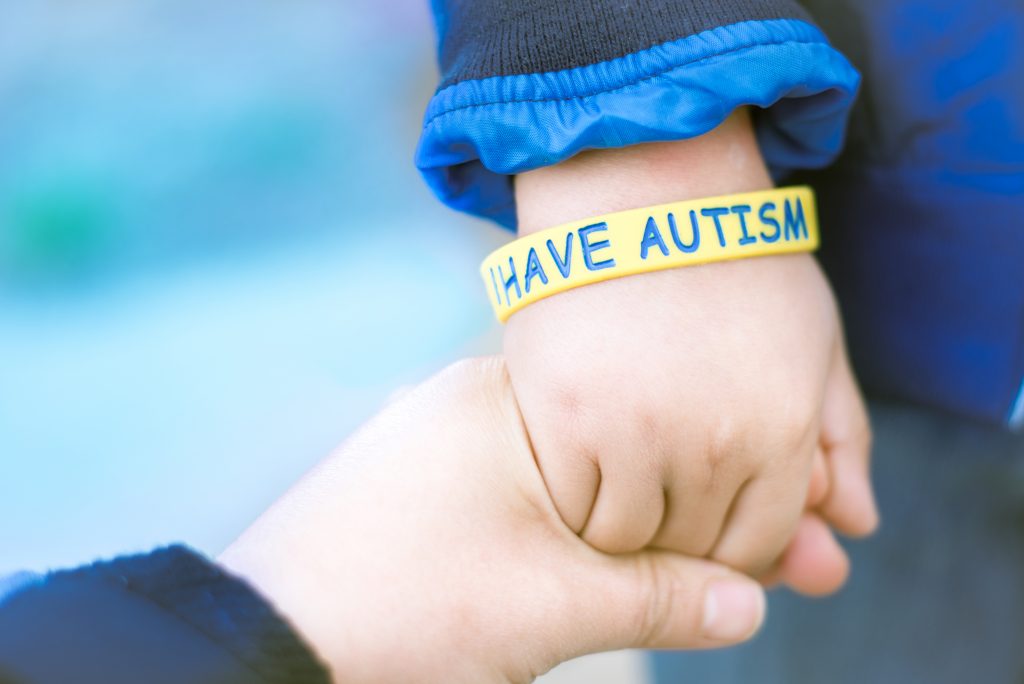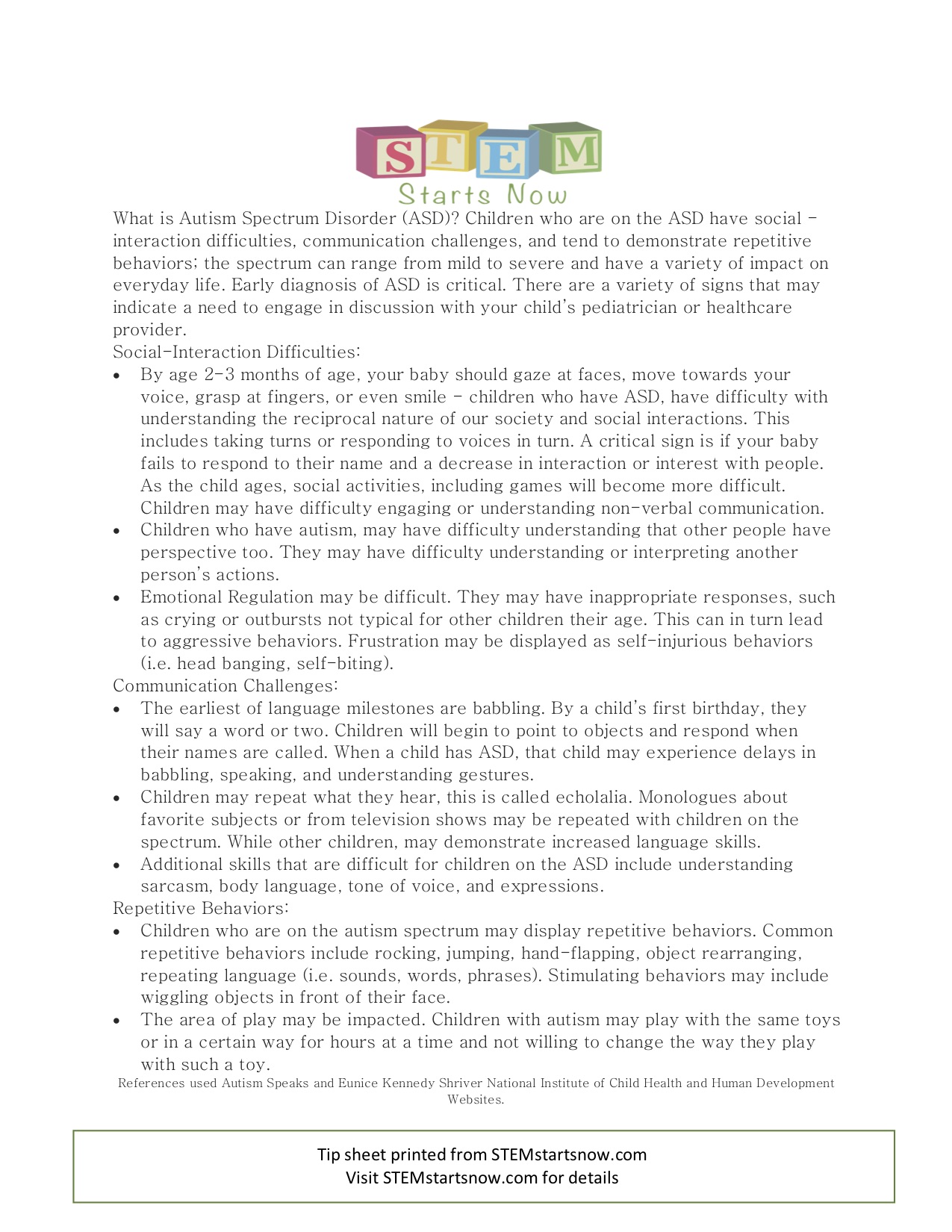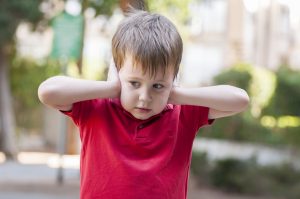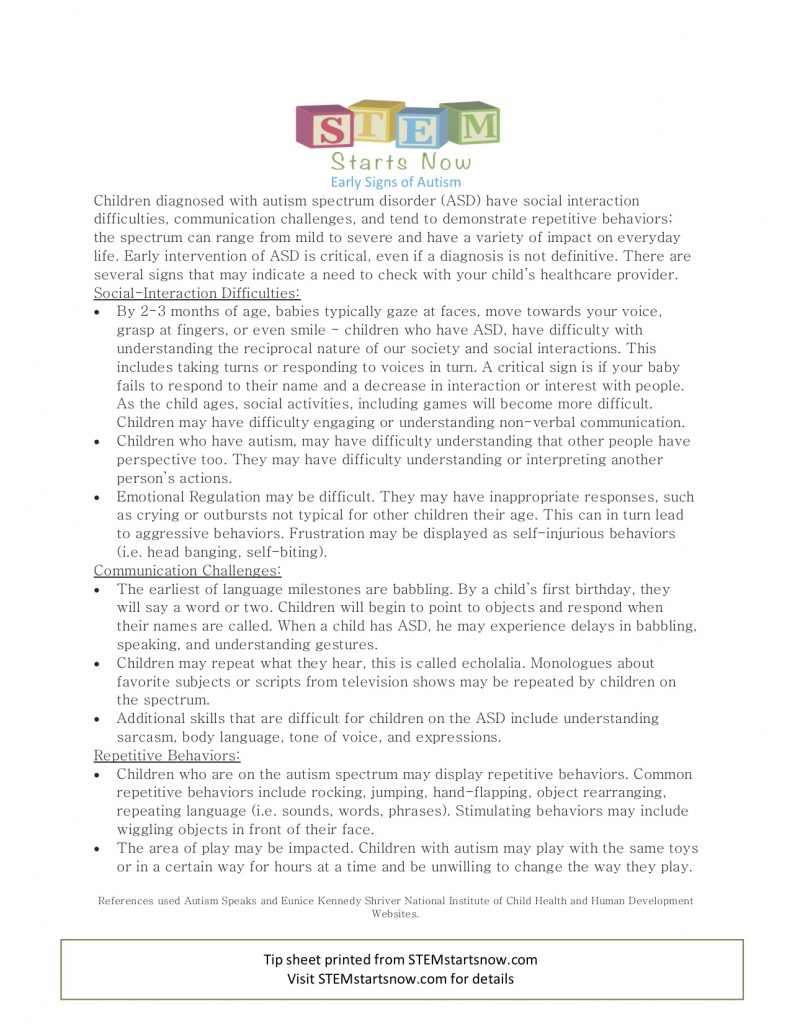Autism is a diagnosis that now affects one in 54 children. It is characterized as a broad range of conditions including challenges with social skills, repetitive behaviors, speech and nonverbal communication.

The Don’ts of Autism
One of the most common question asked by a new parent is “what are the early signs of autism?” It is a very good question and requires a comprehensive answer.
The most important thing is for parents to educate themselves on typical early childhood development. If parents know what important milestones to expect at each age if a developmental delay presents itself, parents can identify it immediately and seek early intervention. Even though there is no cure for autism, early intervention makes a tremendous difference in a child’s outcome. Recent studies have found that autism can now be identified as early as 18 months and in some rare cases, intensive early therapy has actually reverse the effects of autism because the still-developing brain can be re-wired.
Autism is identified by the absence of typical behaviors, not the presence of abnormal ones. Autism can sometimes present itself by what babies “don’t” do as opposed to what babies “do”.
Babies demonstrate early signs of autism when they:
- don’t respond to cuddling
- don’t reach to be picked up
- don’t make eye-contact
- don’t smile when you smile at them
- don’t make noises or imitate facial expressions
- don’t point or wave goodbye
- don’t respond to their name or familiar voices
- don’t follow objects visually
Symptoms of autism usually start to surface between 12 and 18 months.
Observe your children closely in different situations and do not rely on your pediatrician to point out delays. The delays might not present themselves during the ten minute doctor appointment. Your pediatrician is a valuable partner, but your own observations are most important.
Please remember that every child develops a little differently, and at their own pace, so do not panic if your baby is a little bit late to hit a milestone and try not to compare your child to other children. Early development is very highly variable. Remember that Autism involves a variety of developmental delays, so consider your baby’s social, emotional, motor, and cognitive milestones. Also developmental delays don’t always mean autism. In some cases they carry a heightened risk, but not always. Trust your instincts!
Diagnosis of Autism
If you observe your child and you have some concerns, the first thing you can do is take a simple online screening tool called the Modified Checklist for Autism in Toddlers (MCHAT).It is a 20 question screen about your child’s behavior and the results of this screen can indicate if you should bring your concerns to the attention of your child’s healthcare provider. If your child’s healthcare provider shares your concerns, they might observe your child in the office and they might also administer the MCHAT again. Many pediatricians and nurse practitioners do this routinely between 18 and 24 months as It is standard for pediatric healthcare providers to screen children for autism during the well-baby checks during this time period. Parents should consider their baby’s healthcare provider as a partner in screening and making this diagnosis. Well-baby visits are usually only several minutes long and the healthcare providers only see a snapshot of the baby’s behavior in the office. It can be hard to identify any delay in this short period of time, so it is very helpful for parents to make their own observations and relay any concerns during the well-baby visit. When you go into the appointment, have a list of concerns written down and also write down your questions so that you don’t forget to address everything during the visit. It can be overwhelming. Pediatricians and nurse practitioners are typically not able to make a final diagnosis. If they have a concern, they will likely refer the child for a full developmental assessment.
Autism is diagnosed by a team of professionals including a psychologist, physician, speech-language pathologist, occupational therapist and social worker who all observe the child in a variety of settings and take developmental information from the parents.
Diagnostic tools:
Modified Checklist of Autism in Toddlers (M-CHAT)
Autism Diagnostic Observation Schedule
Autism Diagnostic Interview-Revised
According to the National Institute of Mental Health (2016) common signs and features of ASD are repetitive behaviors, overly focused interests, limited or inconsistent eye contact, misunderstanding social cues, difficulty with back and forth conversations, echolalia, flat or robot-like tone of voice, sensory sensitivities, above average intelligence, excelling in math, science, music or art.
One of the most common findings in children with ASD is an increased head size. This is thought to be due to an increase in grey and white matter, which reverses in early adolescence resulting in smaller than typical brain size, indicating an atypical acceleration of brain growth followed by a decrease in growth. The overgrowth is most pronounced in the cerebellum and frontal and temporal lobes, the part of the brain responsible for social skills, cognitive functions, and language indicating the connection between the symptoms and neurobiological findings to date.
Click here to print Early Signs of Autism tip sheet
Prevalence
In a study recently published by Pediatrics, it was found that the current prevalence of parent-reported ASD is increased to 1 in 40 children. This is significantly increased from the 1 in 59 that was previously documented and still listed on the Autism Speaks website. 1 in 59, or 1.7% of children is based on a report from 2014 from the Center for Disease Control and Prevention. According to this new finding, ASD is reported in 2.5% of children which represents 1.5 million children between the ages of three and 17. There continues to be discussion regarding the exact prevalence and the validity of the parent-reported study, but the fact remains, autism is pervasive and potentially rising in prevalence.
Click here for Autism Tip Sheet STEM Now – ASD

Additional links and resources:
Learn the early Signs of Autism
take the Modified Checklist for Autism in Toddlers (M-CHAT) here
Important things to remember:
Babies develop at their own pace. It is important for parents to know what to expect and keep track of developmental milestones so that mini milestones can be noted continuously. When parents are informed, they can be vigilant for regression or long plateaus in developmental milestones. If any regression or plateau is noted, talk to your baby’s childcare provider. Remember, each child with autism looks different from every other child with autism as it manifests itself very differently in different children. One child may have a group of symptoms, while another child has a completely different group of symptoms. It is highly variable and very difficult to diagnose. Each child requires their own unique form of treatment to address their particular challenges. Autism Speaks has an in-depth guide to learning the signs of autism starting at six months.
If you have any concerns at all, do not be afraid to bring it up at your baby’s next well-baby visit. Research tells us that many children with autism are not being treated as early as they can be. When concerns are brought to light early, intervention can occur when the child’s brain is still able to be molded. Babies brains have a lot of plasticity for the first three to five years and it is easier to remediate at that point. When a delay or indication of autism has been identified, children often qualify for occupational therapy, physical therapy and speech and language pathology and a lot of the child’s developmental needs can be addressed. These professionals can also provide strategies for families to create consistency for the child and create the best outcomes.
References
Autism Speaks. (2017). Retrieved from https://www.autismspeaks.org/what-autism/learn-signs
Johnson Center for Child Health and Development. (2016). Retrieved from http://www.johnson-center.org/index.php/diagnostics/index
Miller-Kuhaneck, H., & Watling, R. (2010): Autism: A Comprehensive Occupational Therapy Approach, Bethesda, MD: AOTA
National Research Council (2001) Educating Children with Autism Book can be accessed and read on-line http://www.nap.edu/openbook.php?isbn=0309072697
Philpott-Robinson, K., Lane, A., Harpster, K. (2016). Sensory features of toddlers at risk for autism spectrum disorder. The American Journal of Occupational Therapy, 70(4), 1-8. doi:10.5014/ajot.2016.019497
Tomchek, S. & Koenig, K. ((2016). Occupational Therapy Practice Guidelines for Individuals with Autism Spectrum Disorder. Bethesda, MD: AOTA.





